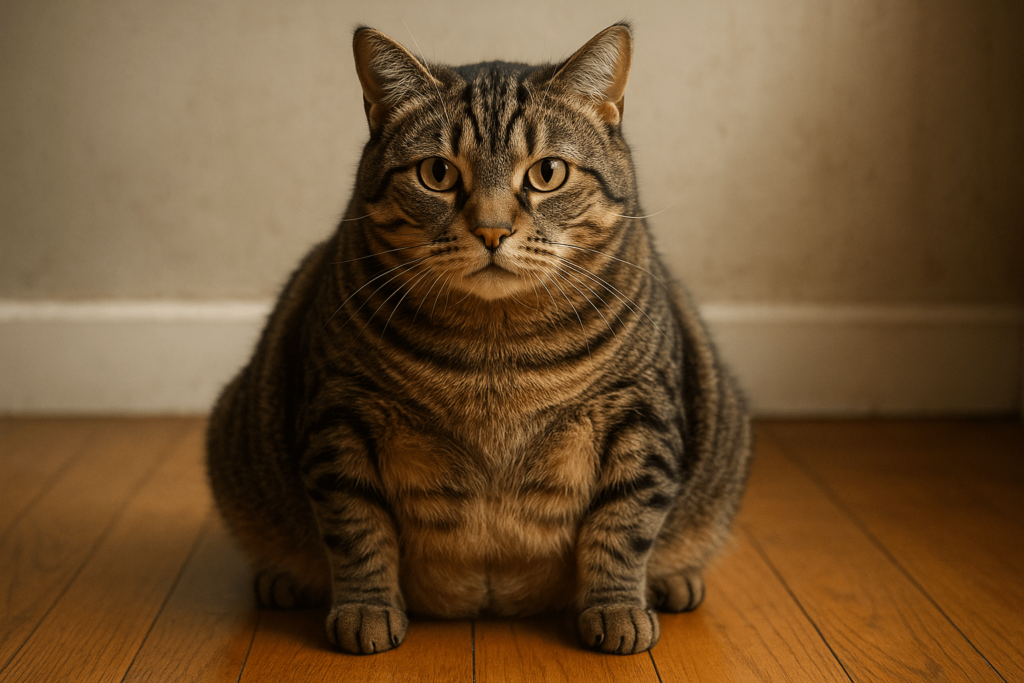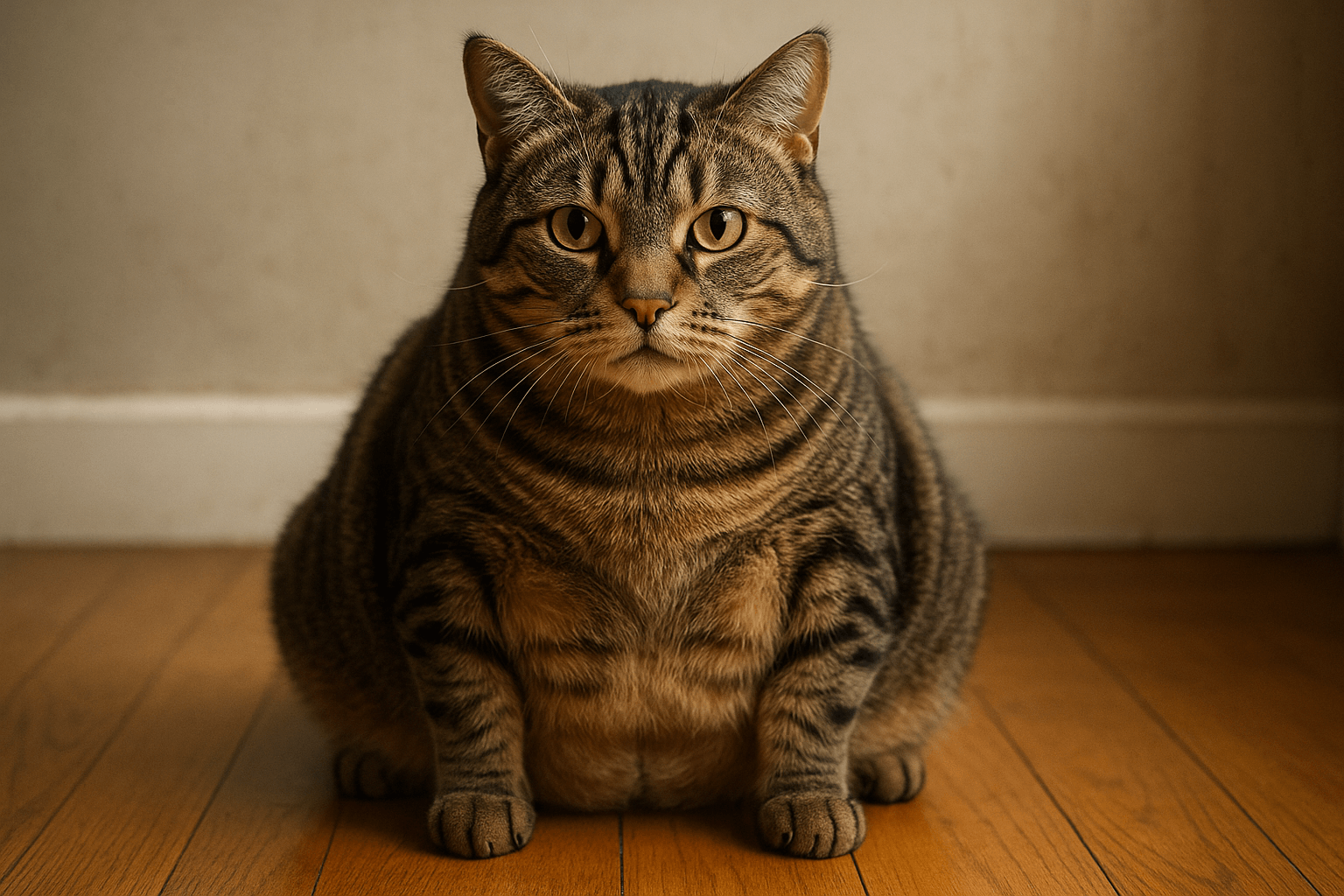Why Does My Cat Have a FUPA?
If you’ve noticed a small pouch of skin hanging loosely around your cat’s belly, you might be wondering what it is and whether it’s cause for concern. This area, often humorously referred to as a “FUPA” (Fat Upper Pubic Area), is actually a perfectly normal anatomical feature in cats. Known as the primordial pouch, this flap of skin serves important biological functions and is not necessarily a sign of weight gain or health issues. However, understanding why your cat has a FUPA—and how to differentiate it from excess fat—can help you ensure your feline friend stays happy and healthy. Let’s explore everything you need to know about this unique trait and how to care for your cat’s well-being.
What Is a Primordial Pouch and Why Do Cats Have It?
The primordial pouch, often mistaken for a FUPA, is a natural part of a cat’s anatomy that serves several evolutionary purposes. Understanding its function can help you appreciate this quirky feature.
Protection During Fights:
The pouch provides an extra layer of skin and fat that protects a cat’s vital organs during fights or rough play.Flexibility for Movement:
This loose skin allows cats greater flexibility when running, jumping, or stretching, enhancing their agility and hunting abilities.Energy Reserve for Survival:
In the wild, the pouch acts as a reserve of fat that cats can rely on during periods of food scarcity.Common in Certain Breeds:
Some breeds, like the Egyptian Mau or Bengal, are more likely to have prominent primordial pouches due to their genetics.Not Always Related to Weight:
Even lean cats can have a noticeable pouch, as it’s a natural part of their body structure rather than a sign of obesity.
Recognizing the purpose of the primordial pouch helps dispel myths and highlights its importance in your cat’s overall physiology.

Signs Your Cat’s FUPA Might Be Due to Excess Weight
While the primordial pouch is normal, excessive weight gain can also contribute to a sagging belly. Here’s how to tell if your cat’s FUPA is related to obesity rather than their natural anatomy.
Difficulty Grooming Themselves:
Overweight cats often struggle to reach certain areas of their body for grooming, leading to matted fur or poor hygiene.Visible Fat Deposits Elsewhere:
Check for fat accumulation around the neck, back, or sides, which may indicate your cat is carrying extra weight.Lethargy and Reduced Activity:
Cats who are overweight may become less active, preferring to sleep rather than play or explore.Increased Appetite Without Growth:
A sudden increase in appetite without corresponding muscle development could signal unhealthy weight gain.Veterinary Confirmation:
Consult your vet to determine whether your cat’s FUPA is due to a primordial pouch or excess fat through a thorough examination.
Understanding these signs ensures you address any potential health concerns promptly while appreciating your cat’s natural traits.
Check this guide 👉Cat Losing Hair on Belly: Best 7 Expert Tips!
Check this guide 👉Cat Has Flabby Belly: Best 7 Expert Tips!
Check this guide 👉The Curious Case of the Cat Belly Button: Best 7 Expert Tips
Primordial Pouch Characteristics | Signs of Obesity in Cats |
|---|---|
Loose, flexible skin under the belly | Fat deposits around the neck and sides |
Present in both lean and overweight cats | Difficulty jumping or climbing |
Protects organs during fights | Lethargy and reluctance to move |
Common in specific breeds | Increased appetite without muscle gain |
Not harmful to health | Poor grooming habits |
How to Maintain a Healthy Weight for Your Cat
If your cat’s FUPA is due to excess weight, taking steps to manage their diet and activity levels can improve their overall health. Here’s how to get started.
Consult Your Veterinarian:
Work with your vet to create a tailored weight-loss plan that considers your cat’s age, breed, and current health status.Adjust Portion Sizes:
Measure your cat’s food portions carefully to avoid overfeeding, even if they beg for more.Choose High-Quality Food:
Opt for nutrient-dense, high-protein cat food that supports muscle maintenance and energy levels.Incorporate Playtime:
Use interactive toys like feather wands or laser pointers to encourage daily exercise and mental stimulation.Monitor Progress Regularly:
Track your cat’s weight weekly and adjust their routine as needed to ensure steady, healthy progress.
By prioritizing your cat’s nutrition and fitness, you can help them achieve a healthier weight while supporting their long-term well-being.
Tips for Bonding While Addressing Your Cat’s FUPA
Whether your cat’s FUPA is natural or related to weight, addressing it can strengthen your bond through shared activities and care routines.
Gentle Belly Rubs (If Safe):
Some cats enjoy gentle belly rubs, but be cautious—many cats find this area sensitive and may react defensively.Interactive Feeding Games:
Use puzzle feeders or treat-dispensing toys to make mealtime engaging and mentally stimulating.Regular Play Sessions:
Dedicate time each day to play with your cat, focusing on activities that mimic hunting behaviors like chasing and pouncing.Positive Reinforcement:
Reward your cat with treats or praise for participating in grooming or exercise routines to build trust and cooperation.Routine Vet Visits:
Schedule regular check-ups to monitor your cat’s health and address any concerns about their weight or anatomy early.
These bonding strategies not only support your cat’s physical health but also deepen your connection with them.
Health Risks of Obesity in Cats
Obesity can pose serious risks to your cat’s health, making it essential to address weight-related concerns promptly. Here are some potential complications associated with excess weight.
Diabetes Mellitus:
Overweight cats are at higher risk of developing diabetes, a condition that requires lifelong management.Joint Problems and Arthritis:
Excess weight puts strain on joints, increasing the likelihood of arthritis and mobility issues.Heart Disease:
Obesity can lead to cardiovascular problems, reducing your cat’s quality of life.Shortened Lifespan:
Studies show that overweight cats tend to live shorter lives compared to their healthier counterparts.Respiratory Issues:
Excess fat can restrict lung function, making breathing difficult during exertion or rest.
Addressing obesity early can prevent these complications and improve your cat’s overall well-being.
Fun Facts About the Primordial Pouch
The primordial pouch is more than just a quirky feature—it has fascinating characteristics that make it truly unique. Here are some fun facts to deepen your appreciation for this trait.
Evolutionary Advantage:
The pouch dates back to wild ancestors who relied on it for survival during hunts and fights.Not Exclusive to Cats:
Similar structures exist in other animals, such as rabbits and marsupials, serving similar protective purposes.Varies by Breed:
Some breeds have larger or smaller pouches depending on their genetic makeup and historical roles.Flexible Skin Benefits:
The loose skin allows cats to twist and turn mid-air, aiding in impressive acrobatics.Cultural Humor:
The term “FUPA” adds a humorous spin to this natural feature, showcasing our playful relationship with pets.
Learning these facts highlights the ingenuity of nature in equipping cats for survival.
How to Encourage Natural Behaviors in Indoor Cats
Indoor cats may miss out on opportunities to engage in natural behaviors, potentially contributing to weight gain. Here’s how to encourage their instincts in a safe environment.
Provide Scratching Posts:
Scratching posts allow cats to stretch and maintain nail health, mimicking outdoor scratching behavior.Create Vertical Spaces:
Install shelves or cat trees to give your cat climbing opportunities, promoting physical activity.Offer Hunting Simulations:
Use toys that mimic prey movements to satisfy your cat’s hunting instincts and keep them active.Rotate Toys Regularly:
Introducing new toys periodically keeps your cat engaged and prevents boredom.Set Up a Window Perch:
A perch near a window lets your cat observe birds and squirrels, providing mental stimulation.
Encouraging natural behaviors ensures your indoor cat stays physically fit and mentally enriched.
Frequently Asked Questions About Cat FUPAs
Is a FUPA dangerous for my cat?
No, a FUPA caused by a primordial pouch is completely normal and harmless. However, excess weight can lead to health issues.
Can I trim or remove my cat’s primordial pouch?
No, the primordial pouch is a natural part of your cat’s anatomy and should not be altered surgically unless medically necessary.
How do I know if my cat is overweight?
Look for signs like difficulty grooming, reduced activity, and visible fat deposits, and consult your vet for confirmation.
Are some breeds more prone to having a prominent FUPA?
Yes, breeds like Bengals, Egyptian Maus, and mixed-breed cats often have more noticeable primordial pouches.
What should I do if my cat resists exercise?
Start slowly with short play sessions and gradually increase intensity, using toys that appeal to their instincts.
Embracing Your Cat’s Unique Features
Whether your cat’s FUPA is a natural primordial pouch or a sign of excess weight, understanding its origins and implications empowers you to care for your pet effectively. By differentiating between normal anatomy and potential health concerns, you can ensure your feline companion remains happy, healthy, and full of personality. Remember, every cat is unique, and embracing their quirks—including their adorable FUPA—is all part of the joy of being a cat owner. With love, patience, and proper care, your cat will thrive and continue to bring endless charm into your life.
Canned Pumpkin for Cat Diarrhea: Best 7 Expert Tips! Natural remedy to firm stools, soothe upset bellies, and support gut health safely.
Can a Cat Give You Scabies? Best 7 Expert Tips! Discover the truth about feline mites, human skin risks, and how to protect yourself—without panic.
Cat Flea vs Human Flea: Best 7 Expert Tips! Discover the truth about bites, species, and how to eliminate infestations for good.
Weird Cat Behaviors: Best 7 Expert Tips! Discover why cats do strange things—and how to understand, not punish, their instincts for a happier home.





